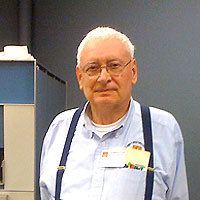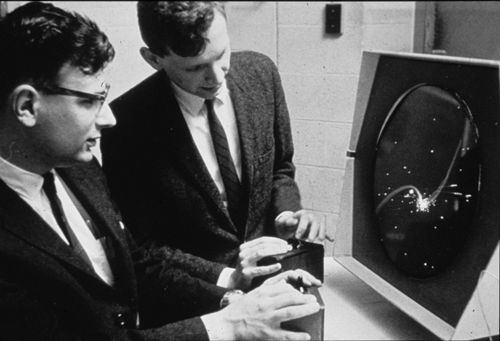Name Peter Samson Role Computer Programmer | Fields Computer Science | |
 | ||
Institutions Education | ||
Residence United States of America | ||
Music on the pdp 1x early computer music 1960 s mit hacker peter samson pdp 1 polyphonic compiler
Peter R. Samson (born 1941 in Fitchburg, Massachusetts) is an American computer scientist, best known for creating pioneering computer software.
Contents
- Music on the pdp 1x early computer music 1960 s mit hacker peter samson pdp 1 polyphonic compiler
- Peter samson demostrando musica sintetizada en un pdp 1
- The Tech Model Railroad Club
- Dawn of software
- DEC
- Chinese
- Synthesized music
- NASA
- Autodesk
- Subway racing
- Current
- References

Samson studied at the Massachusetts Institute of Technology (MIT) between 1958-1963. He wrote, with characteristic wit, the first editions of the Tech Model Railroad Club (TMRC) dictionary, a predecessor to the Jargon File. He appears in Hackers: Heroes of the Computer Revolution by Steven Levy.

Peter samson demostrando musica sintetizada en un pdp 1
The Tech Model Railroad Club
As a member of the Tech Model Railroad Club in his student days at MIT, Samson was noted for his contributions to the Signals and Power Subcommittee, the technical side of the club. Steven Levy's Hackers: Heroes of the Computer Revolution outlines Samson's interest in trains and electronics, and his influence in the club. Levy explains how the club was in fact Samson's gateway into hacking and his ability to manipulate electronics and machine code to create programs. Levy explains how Samson discovered his programming passion with the IBM 704, but frustration with the high level of security around the machine. Only those with very high clearance were able to actually handle the computer, with all programs submitted to be processed through the machine by someone else. This meant Samson would not find out the results of his programs until a few days after submitting them. Because of these restrictions to the IBM 704, it was not until Samson was introduced to the TX-0 that he could explore his obsession with computer programming, as members of the Railroad Club were able to access the computer directly without having to go through a superior.
Dawn of software
Working with Jack Dennis on the TX-0 at MIT Building 26, he developed an interest in computing waveforms to synthesize music. For the PDP-1 he wrote the Harmony Compiler with which PDP-1 users coded music.
He wrote the Expensive Planetarium star display for Spacewar!.
Also for the PDP-1 he wrote TJ-2 (Type Justifying Program), the predecessor of the troff and nroff page layout programs developed at Bell Labs, a War card game, and, with Alan Kotok, T-Square, a drafting program that used a Spacewar! controller for an input device.
DEC
Samson was a contributing architect to the Digital Equipment Corporation (DEC) PDP-6, and wrote the machine's first Fortran compiler, for Fortran II.
Chinese
At Systems Concepts, he programmed the first Chinese-character digital communication system, while he was director of marketing and director of program development.
Synthesized music
Samson designed the Systems Concepts Digital Synthesizer. Built at Systems Concepts, for ten years it was the primary engine for the computer music group at Stanford University Center for Computer Research in Music and Acoustics (CCRMA).
NASA
Samson oversaw manufacturing and engineering for hardware, including the central memory subsystem for the ILLIAC IV supercomputer complex at the NASA Ames Research Center.
Autodesk
At Autodesk, he contributed to rendering, animation, Web browsing, and scripting languages. He received U.S. patents in software anti-piracy and virtual reality.
Subway racing
In 1966 Samson attempted to ride all lines of the New York City Subway in the shortest possible time. True to the MIT hacker culture he enlisted a computer in planning for the event. Despite missing out on the then fastest time, Samson's attempt was to act as the inspiration for many similar subway racing attempts.
Current
Samson appears in the Computer History Museum Mouse That Roared panel discussion recorded in May 2006 to celebrate the restoration of a PDP-1. For the restoration project he reverse-engineered music tapes from the PDP-1 era and built a player for the museum where he is currently a docent.
